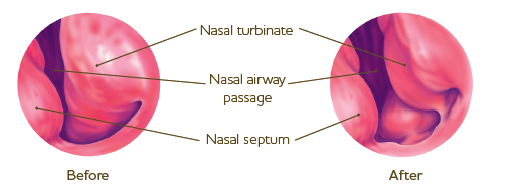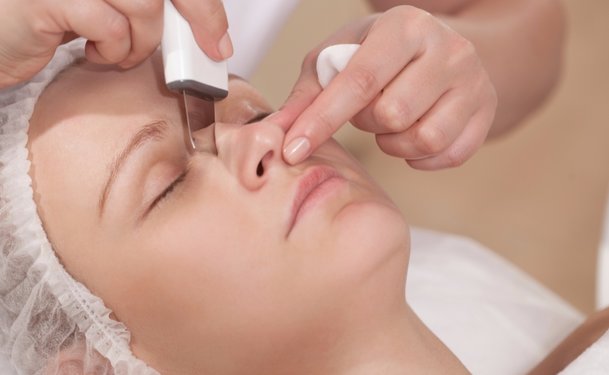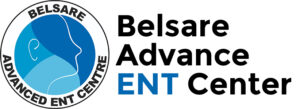septoplasty and turbinectomy surgery
This operation is performed to treat a chronically blocked nose. Your surgeon will have assessed the cause to be due to a bend in the nasal septum (plate of bone and cartilage separating your left from right nostril), and or due to enlarged turbinates. Occasionally this procedure is undertaken as a part of sleep apnoea surgery to improve the nasal airway or to allow you to use your CPAP mask and sometimes it is done to allow access to structures deeper within the nose such as polyps or the sinuses.
What is the recovery like?
This is generally not a very painful operation from which to recover. For the first few weeks your nose will feel quite blocked and you will have increased mucus and some dried blood in the nose. Saline rinses may be recommended. The front of the nose may be tender from the small dissolvable sutures just inside the nostril. It is important to follow the prescribed rest period at home. Vigorous exercise should be avoided for at least 2 weeks. You may need up to 2 weeks off work (a medical certificate will be supplied if needed). By approximately 6 weeks after the surgery your nose should have healed.
Specific problems
• Bleeding – can occur occasionally and, if severe, a nasal pack will need to be reinserted to stop bleeding.
• Infection – can occur in the skin or mucosa of the nose or the septum. If you have any pus-like discharge, fevers or are concerned about infection please report this to the surgical team.
• Numbness – around the nasal tip or front teeth is usually only temporary but can persist.
• Nasal Adhesion – (where the turbinate heals to the septum) – can be checked for and dealt with at your review appointment. Incidence of <5%
• Septal Perforation – (a hole in the nasal septum between the left and right side) is often asymptomatic or can lead to crusting and intermittent small volume nose bleeds. There are ways of dealing with this complication, sometimes with another operation, if it occurs and is a problem. Incidence of < 2%
• Change in external appearance of the nose – Incidence of <1%
• No improvement in Nasal Air flow – Incidence of 5%
Discharge Instructions
- Keep well hydrated -Take regular analgesia (paracetamol, oxynorm)
- Use nasal sprays and lubricants if prescribed
- Rest adequately & avoid excessive exertion
- Attend your review appointment



